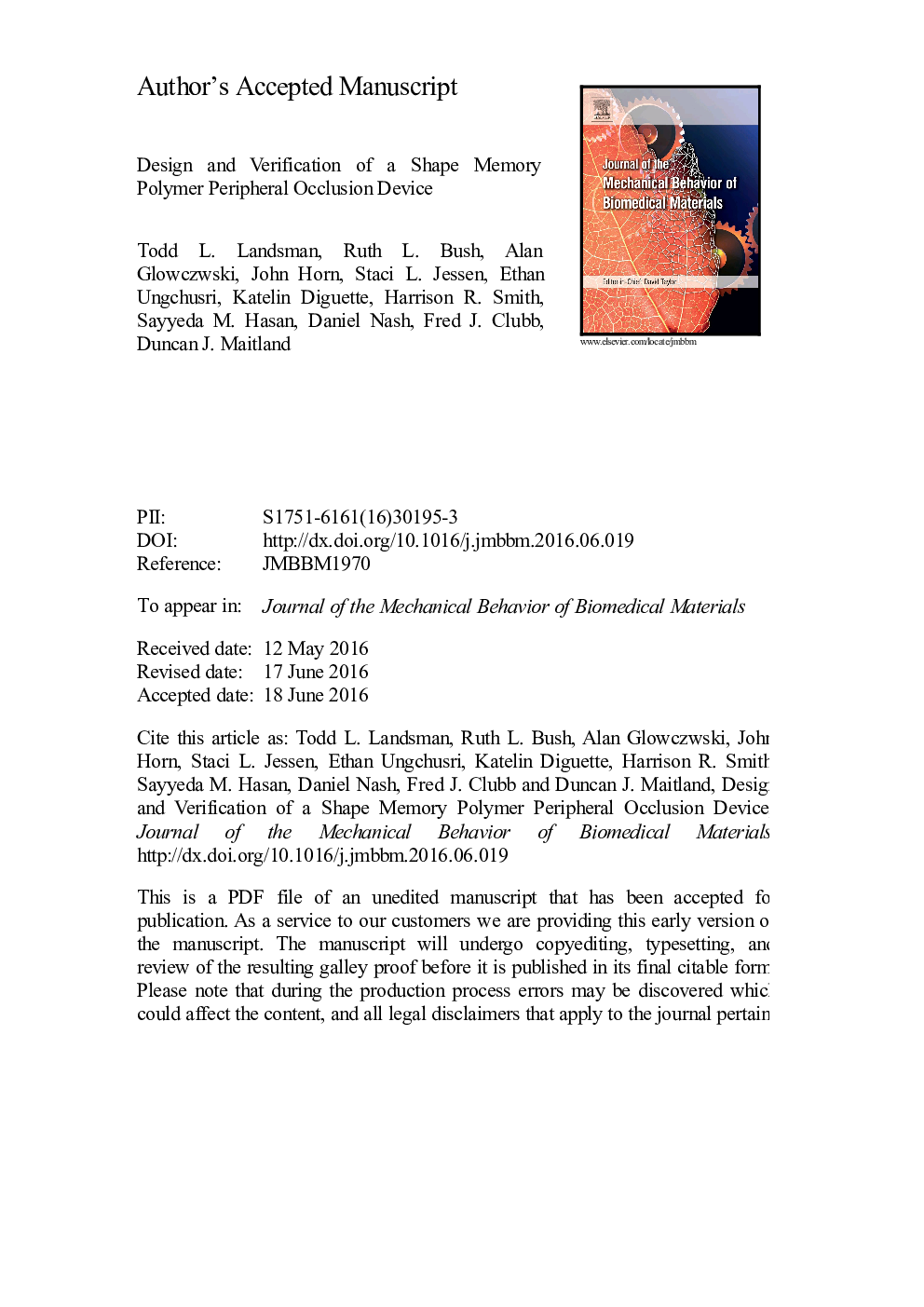| Article ID | Journal | Published Year | Pages | File Type |
|---|---|---|---|---|
| 7207736 | Journal of the Mechanical Behavior of Biomedical Materials | 2016 | 43 Pages |
Abstract
Shape memory polymer foams have been previously investigated for their safety and efficacy in treating a porcine aneurysm model. Their biocompatibility, rapid thrombus formation, and ability for endovascular catheter-based delivery to a variety of vascular beds makes these foams ideal candidates for use in numerous embolic applications, particularly within the peripheral vasculature. This study sought to investigate the material properties, safety, and efficacy of a shape memory polymer peripheral embolization device in vitro. The material characteristics of the device were analyzed to show tunability of the glass transition temperature (Tg) and the expansion rate of the polymer to ensure adequate time to deliver the device through a catheter prior to excessive foam expansion. Mechanical analysis and flow migration studies were performed to ensure minimal risk of vessel perforation and undesired thromboembolism upon device deployment. The efficacy of the device was verified by performing blood flow studies that established affinity for thrombus formation and blood penetration throughout the foam and by delivery of the device in an ultrasound phantom that demonstrated flow stagnation and diversion of flow to collateral pathways.
Related Topics
Physical Sciences and Engineering
Engineering
Biomedical Engineering
Authors
Todd L. Landsman, Ruth L. Bush, Alan Glowczwski, John Horn, Staci L. Jessen, Ethan Ungchusri, Katelin Diguette, Harrison R. Smith, Sayyeda M. Hasan, Daniel Nash, Fred J. Jr., Duncan J. Maitland,
